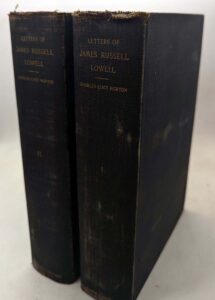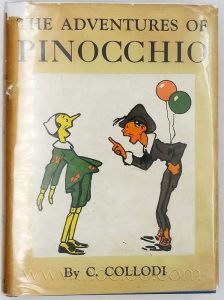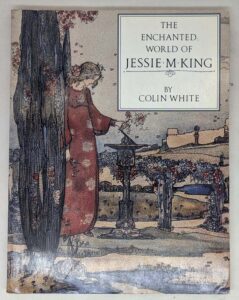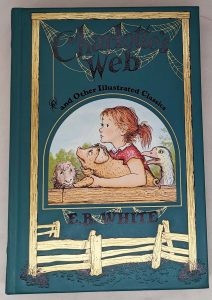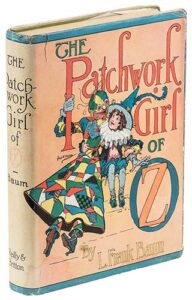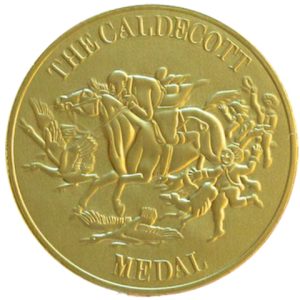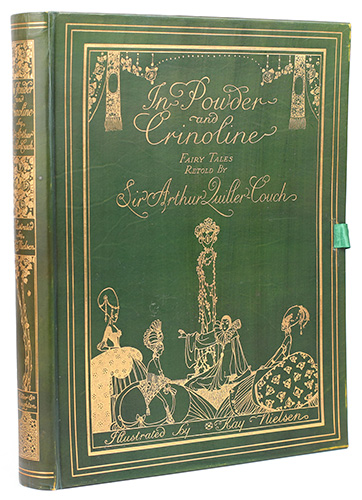
In Powder and Crinoline (1913), by Sir Arthur Quiller-Couch and illustrated by Kay Nielsen, represents a dazzling early showcase of Nielsen’s emerging genius in the golden age of illustration. Published by Hodder & Stoughton, this lavish volume reimagines classic fairy tales like “Beauty and the Beast” and “Snow White” through Nielsen’s distinctive style that blends Nordic austerity with Art Nouveau sensuality. His angular, elongated figures move through dreamlike landscapes where gothic arches frame scenes of both delicate romance and unsettling drama—the Beast’s clawed hands contrasting with Beauty’s flowing gown in one particularly striking plate. Nielsen’s limited palette of slate grays, blush pinks, and inky blacks creates a haunting elegance, especially in his moonlit scenes where silver-leaf accents make armor and jewels gleam against the page. The artist’s intricate linework shows clear Japanese woodblock influences in the patterned fabrics and stylized foliage, while his compositions—often viewed from dramatic low angles—give the tales a theatrical grandeur. This Limited edition’s production values, with thick handmade paper and Nielsen’s illustrations reproduced through meticulous color stenciling, mark it as a transitional masterpiece between Edwardian opulence and modernist design.
About Kay Rasmus Nielsen (1886-1957):
The Danish artist was just 27 when he created these illustrations, fresh from Parisian art schools and brimming with innovative energy. His work here already displays the signature elements that would define his later masterpieces—the interplay of negative space and dense ornamentation, the fusion of medieval motifs with contemporary stylization, and that uncanny ability to make the familiar feel wondrously strange. Though East of the Sun and West of the Moon (1914) would eclipse this debut, these 1913 plates reveal Nielsen’s artistic DNA: the coiled tension in a wolf’s stance, the way a princess’s robe seems to melt into snowdrifts, the almost architectural precision of his storytelling. Original watercolors from this series, with their experimental gold and silver overlays, now anchor museum collections from Copenhagen to Los Angeles.
For admirers of this edition, these kindred works may intrigue:
• Red Magic (1930) also illustrated by Nielsen – his last majestic work
• The Sleeping Beauty (1920) illustrated by Edmund Dulac – for contrasting Edwardian treatment
• Andersen’s Fairy Tales (1924) – illustrated by Nielsen – showing his range
This is Kay Nielsen’s first illustrated book: In Powder and Crinoline: Old Fairy Tales Retold by Sir Arthur Quiller-Couchwas. Published by Hodder & Stoughton, London, 1913. Nielsen went on to illustrate East of the Sun, West of the Moon (1914), Andersen’s Fairy Tales (1924), Hansel and Gretel (1925) and Red Magic (1930).

